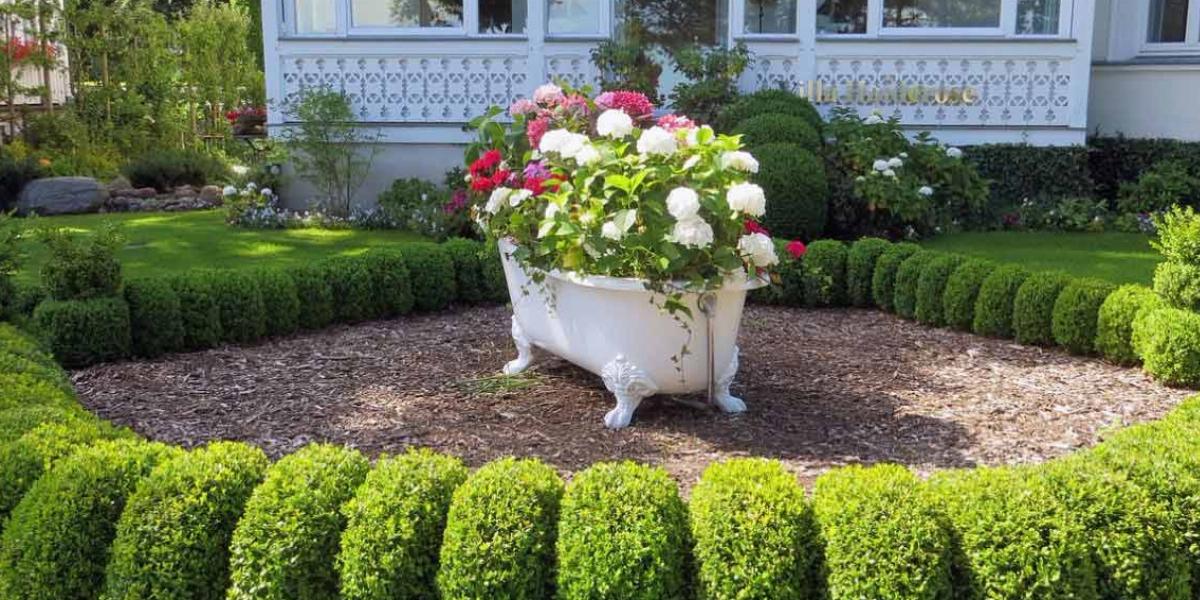
Maybe you inherited a lawn full of landscaping woes when you moved into your new home. Or perhaps your front yard has developed issues over time. If more than half of your yard—including your lawn, all your trees and plants and any decks or other structures—has problems, starting over is often a better plan than struggling to repair what you’ve already got. Follow these steps to learn how to completely redo your landscaping when quick fixes will no longer cut it.
Even if your landscaping is suffering from major problems, you may not have to get rid of everything. But if making those decisions seems overwhelming, here are a few suggestions for where to start.
It will be much easier to enjoy your yard when it’s safe. As a first step to renovating your lawn, look for these potential safety hazards:
“Over the years, the methods for installing walkways, patios and retaining walls have changed. If you have structures that are damaged, they should generally be replaced with something built to modern standards.”
- Molly Meulenbroek | General Manager, Studley’s Flower Garden
Having clear lines of sight throughout your front yard is important both for visual appeal and for safety. Molly Meulenbroek of Studley’s Flower Garden advises anyone redoing their front landscaping to remove any trees, shrubs or other plants that block the view from windows and doors or that have overgrown a walkway. This is especially important if you may sell your home in the future. A clear, welcoming view of the front of your house is key to good curb appeal.
Obviously, you’ll want to get rid of any plants that are unhealthy or have entirely died off—this includes any unhealthy portions of your lawn itself. At the same time, you should also plan to rid yourself of:
An important aspect of deciding how to redo your lawn is determining which tasks you can handle yourself—saving money in the process—and which you’ll leave to a landscaping company.
Some common tasks when redoing your landscaping require specialized skills to accomplish safely or without causing further damage to your yard:
"Tree care specialists are the best for taking care of any large trees. A landscaping company can handle smaller-specimen trees and shrubs."
- Molly Meulenbroek | General Manager, Studley’s Flower Garden
Other tasks are safe for homeowners with some DIY experience to tackle themselves:
You can also try one of these DIY outdoor projects to really take your yard to the next level. If you decide to handle these tasks yourself, keep in mind that you’ll need a plan for getting rid of the resulting demolition debris, which won’t be accepted in your curbside trash collection.
Once the heavy lifting is behind you, it’s time for the fun part of lawn renovation: deciding on your new look. Here are some tips for getting started.
Before you set foot in a garden center, sketch out a general idea of what elements you want to include in your newly-improved yard and where they’ll be situated. Doing this will ensure that your new plants can thrive where they’ll be planted. It will also help you create a more cohesive look for your new landscaping.
Of course, the look of your new landscaping should be shaped by your own personal style. But there are certain trends that are worth keeping in mind while you’re drawing up your plans.
When you’re landscaping your front yard from scratch, you’ll likely need to bring in professional landscapers for at least some of the work. Meulenbroek recommends looking for companies that are members of national or state trade associations, since these will be up-to-date on industry best practices. Before choosing a company to work with, be sure to look through multiple examples of their work to gauge whether it fits your style.
“Choosing a landscape company is similar to choosing contractors for other projects around your home. Take the time to talk to several to decide who you feel comfortable working with.”
- Molly Meulenbroek | General Manager, Studley’s Flower Garden
When you’re finished redoing your landscaping, use our yard cleanup guide to keep it looking its best. Planning to overhaul your landscaping? What are you getting rid of?


